Around the time Wind Concerns was launched over a year ago, an MLA warned me on the phone: “The Pembina Institute is no friend of Alberta.” Pembina is the “think tank” that is desperately trying to push Alberta toward a “net zero” grid and forsake its fossil fuel industry. But it takes little forethought to realize what a disaster this would be for the province, both from an economic and energy stability perspective — especially if intermittent and unreliable solar and wind are the proposed replacements.
No Threat?
As reported in Alberta Farmer, “The province’s booming renewables industry will not be a threat to Alberta’s agricultural or environmental industries, said a report released [in March] by the Alberta Utilities Commission (AUC).” If all renewable development locates on (some of Alberta’s best) land, they noted, the percentage of agricultural land loss is estimated to be less than one percent by 2041.
“After doing a comprehensive review on the agricultural impact, the AUC found there were no significant concerns for agriculture or the environment from renewables. In fact, they found that existing protections are enough to ensure that agricultural land is protected,” said Jorden Dye, director of the Business Renewable Centre, a side project of the Pembina Institute.1
But the conclusion is so myopic, so narrow in scope, so devoid of other facts, it’s precisely why rural Albertans like us are rising up en masse to provide a crucial and balanced perspective to the “green” transition. But we also, thankfully, see that the current government has their eyes wide-open right now and is hardly taking this report as a go-ahead to let wind and solar build at whim.
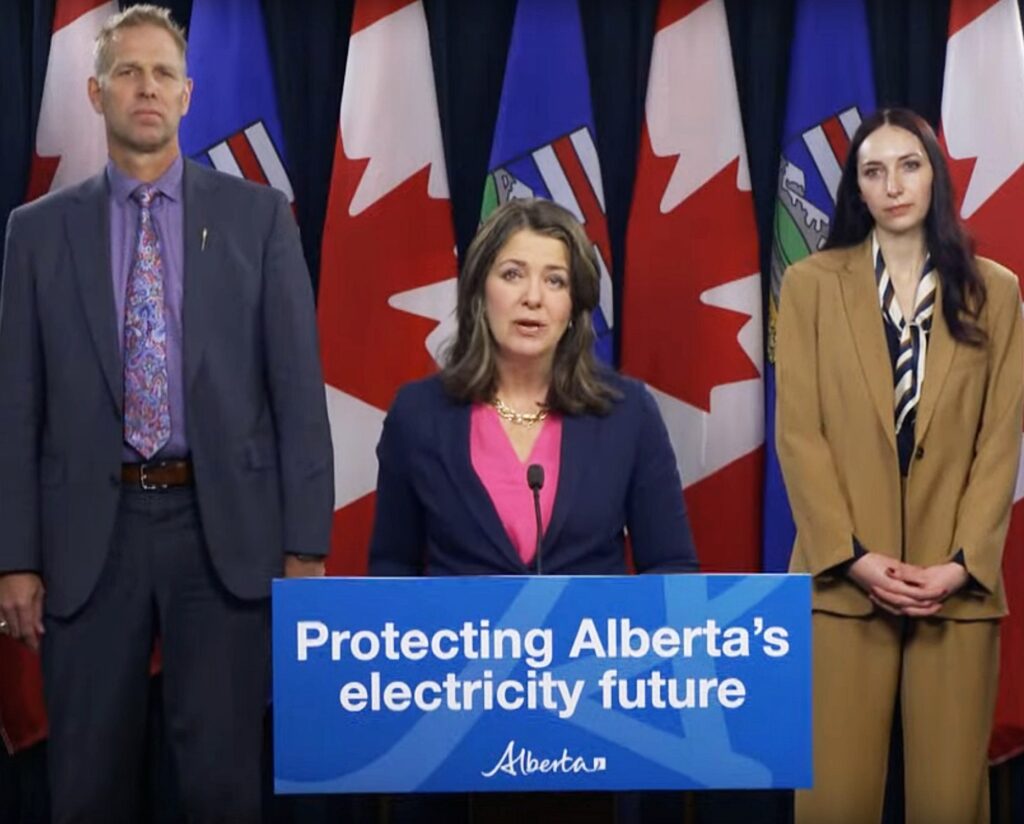
On the contrary, Premier Danielle Smith and Minister of Affordability and Utilities Nathan Neudorf announced that Alberta will no longer permit renewable energy projects on Class 1 or 2 soils. But she immediately added the caveat: “unless the proponent can demonstrate the ability for both crops and livestock to co-exist with the renewable generation project.”2
As we have reported here, however, co-existence with industrial wind turbines is an unfolding disaster. When it comes to soil, research published in peer-reviewed journal Science of the Total Environment found that “wind farms significantly reduced soil moisture within the wind farms and in the upwind and downwind directions.”3 That means that not only will croplands be negatively impacted where turbines are hosted, but so too will neighboring crops and pastures.
Our research shows that the operation of wind turbines will cause significant drying of soil, and this drought effect differs significantly according to season and wind direction.
Prof Gang Wang of the School of Resources and Environmental Engineering, Ludong University in China, GRIPT News, May 11, 2023
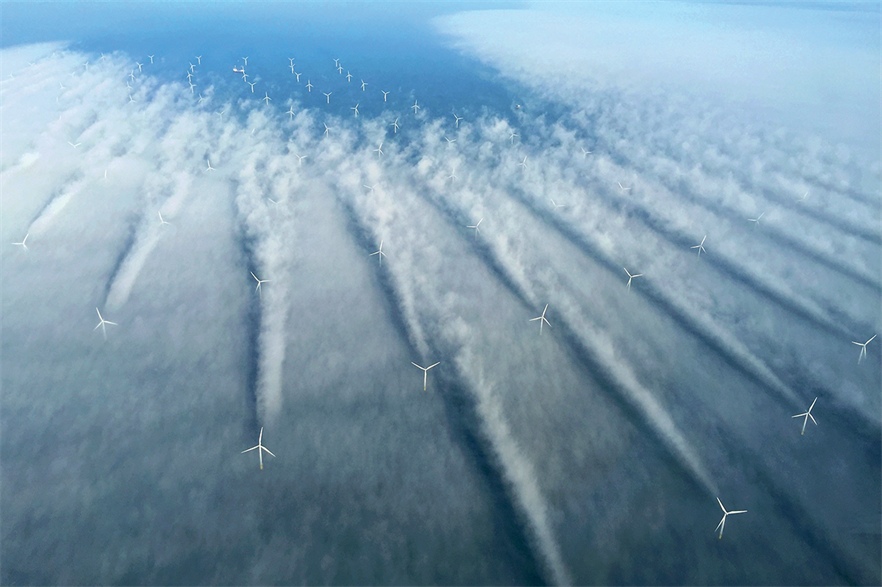
If we’re comparing energy resources, I’m not aware of pumpjacks causing drought conditions for several kilometres such as over the span of a windfarm.
Moreover, new research has confirmed anecdotes that wind plants are driving away earthworms.4
Therefore, the negative relationship we find between wind turbine noise levels and earthworm abundance could potentially have cascading effects on other soil organisms and processes and should also draw attention to other sources of seismic noise (Lecocq et al. 2020).
Vibrational noise from wind energy-turbines negatively impacts earthworm abundance, March 29, 2021, Oikos‘ p.848
When it comes to whether livestock and turbines can co-exist, this is where that claim goes south. Globally, disturbing evidence has found profound impacts on animals living in close proximity to industrial wind turbines (IWTs),5 from sterilization to birth defects.
Reports of adverse effects on animals located near IWTs indicate that there may be a temporal relationship between proximity to wind turbines and stress-related reactions and adverse effects on fertility, development, and reproduction. AHEs (adverse health effects) in animals that have been attributed to proximity of IWTs include reproduction and teratogenic effects in the USA,[120,121] Canada,[122,123] Denmark,[124] and Japan;[125] deformities in Portugal;[65] mortalities in Canada, France,[126,127,128,129] and Taiwan;[130,131] stress in the UK;[132] and other effects. (See original link here for footnotes).
“Wind turbines and adverse health effects: Applying Bradford Hill’s criteria for causation”, Dumbrill et al., Sept. 2021
Farms are managed by… Farmers
The AUC’s report, and Pembina’s glowing endorsement of it, fail to acknowledge the impact of industrial wind plants on people. Alberta’s government is among the first to begin to recognize the impact wind plants have on the lives of rural Albertans, upon their neighborhoods and the precious resource of beauty that Alberta is known for.6
We will establish buffer zones of a minimum of 35km around protected areas and other pristine viewscapes as designated by the Province. New wind projects will no longer be permitted within those buffer zones, and other proposed developments, located within the buffer zones, may be subject to a visual impact assessment before approval.
Albertans have been vocal that they don’t want large-scale developments to interfere with our province’s most beautiful natural features. You cannot build wind turbines the size of the Calgary tower in front of a UNESCO World Heritage site; or on Nose Hill; or in your neighbor’s backyard. We have a duty to protect the natural beauty and communities of our province.
Premier Danielle Smith, Press Conference, February 28, 2024; YouTube

Moreover, property values have been shown to plummet around industrial wind plants, according to numerous independent real estate evaluations and even a recent wind industry-cited study.7 The impacts on acreage owners and farmers alike are not little with an average of 25% to approximately 40% of value loss.
Most glaring of all is that the AUC and Pembina have yet to acknowledge the impacts of industrial wind on human health. Recent studies show that, due to the increasing size of turbines, human health can be impacted up to 15km away from industrial wind sites.8 Dr. Ursula Bellut-Staeck, a German scientist, recently published a paper on “infrasound” generated by turbines calling them “a huge threat to the entire biodiversity.”9 In Ontario, where industrial wind proliferated among residences, many people abandoned their homes and some have not been able to return.10

But Europe is far ahead of Alberta in understanding the impact this is having on rural communities. Ireland’s High Court just ruled that wind turbine “noise” is a “nuisance”, opening up the possibility for compensation claims for those forced to live near them. France’s Council of State ruled that many wind plants there are likely in violation of the law due to failure to comply with “noise nuisance protocol which is supposed to protect the health of local residents.” Other courts have already awarded damages to victims11 while Slovakia just passed a law requiring turbines to be at least 3km from inhabited dwellings.
So, when the AUC downplays the impact of wind plants on Alberta farmland, it seems they have forgotten that farms are managed by, yes, farmers. People. Human beings who live and work there, often with animals and pets.
Pembina’s Hypocrisy
This article would not be complete without noting again that the Pembina Institute is a leading critic and watchdog of the oil industry and their environmental faux pas.
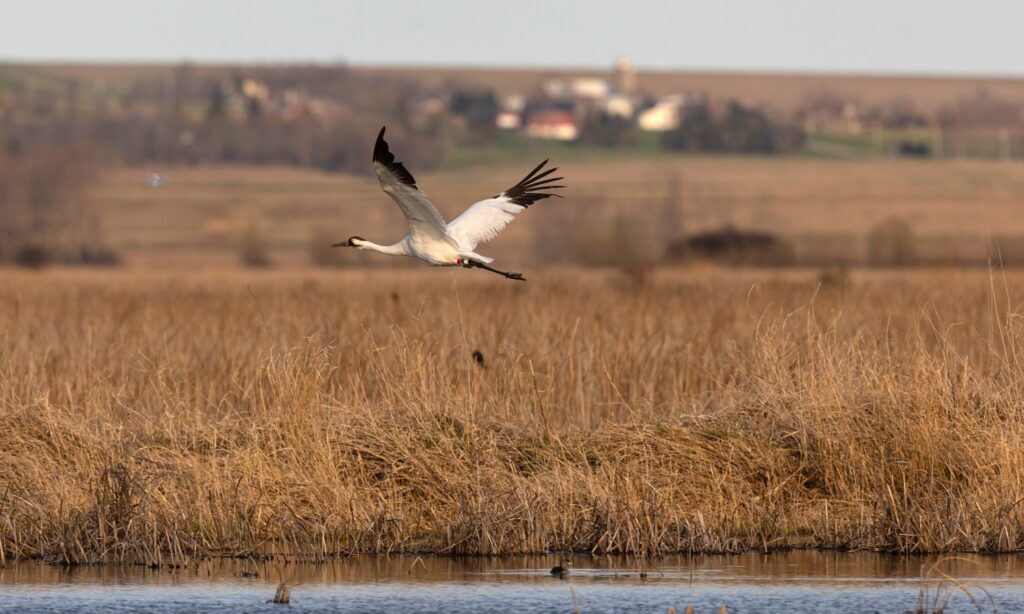
Ironically, one of Pembina’s Board of Directors, Jamie Houssian,12 is the Principal of Elemental Energy, a Vancouver-based company planning to build an industrial wind plant in the Northern Valley south of Elk Point. The land they chose is not only primarily Class 2 soil, but is a summer home to the endangered Whooping Crane. Indeed, this is a director from the very same think tank that has lamented the possible demise of the Whooping Crane due to the oilsands.13
On that topic, let’s note that wind turbines kill as many as 1.17 million birds a year in the U.S. alone, according to several studies.14 They are also increasingly robbing precious habitat of the Whooping Crane. “We now know that too many of these turbines are eliminating important migratory stopover habitat for this Endangered species,” said Joel Merriman of American Bird Conservancy (see A Whooping Big Deal).15
The global potential for wind power generation is vast, and the number of installations is increasing rapidly. We review case studies from around the world of the effects on raptors of wind-energy development. Collision mortality, displacement, and habitat loss have the potential to cause population-level effects, especially for species that are rare or endangered.
Richard T. Watson, 2018, bioone.org
Moreover, one cannot speak of the impact on agricultural land in Alberta without also acknowledging the near-apocalyptic decimation of insect and bat populations occurring at wind turbine sites, to the point of potentially damaging local ecosystems permanently.
Experts predict that four bat species will lose more than half of their populations due to collisions with wind turbines in the next 15 years if effective conservation actions are not taken soon.
“State of the Bats Expert Elicitation Summary”, 2023, batcon.org
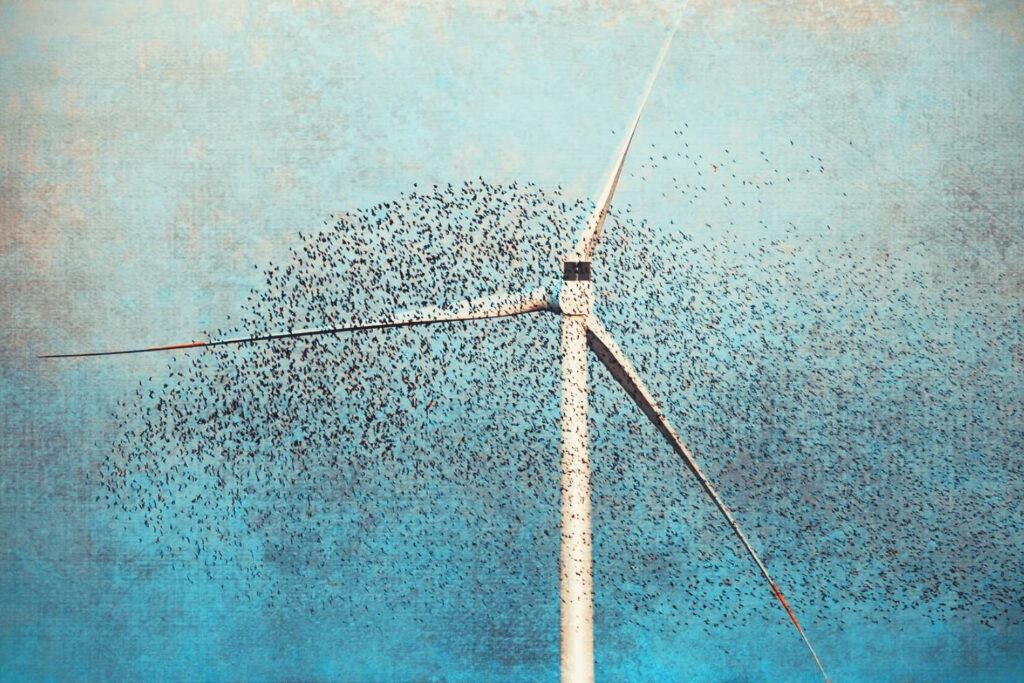
The Committee on the Status of Endangered Wildlife in Canada (COSEWIC) announced that the Hoary Bat, Eastern Red Bat and Silver-haired Bat have been assessed as Endangered in Canada. This listing now means that 5 of the 9 bat species that occur in Alberta have been formally assessed as Endangered.16 Moreover, wind turbines destroy bat food — insects — to such a large degree, that studies show that turbines are wiping out local insect populations.
Recently, the annual loss of insect biomass at wind turbines was estimated for Germany to amount 1,200 t for the plant growth period, which equates to about 1.2 trillion killed insects per year, assuming 1 mg insect body mass. Accordingly, a single turbine located in the temperate zone might kill about 40 million insects per year.
“Insect fatalities at wind turbines as biodiversity sinks”, Christian Voight, January 26, 2021; Conservation and Science Practice journal
Given that insects and bats play a major role in the cross-seeding and pollination of crops, how can the Pembina Institute and the AUC overlook these catastrophic consequences by one of the most harmful energy resources man has ever invented?
To say that the renewable energy industry is not a threat to Alberta’s agriculture and environment is a gross overstatement. Hopefully, it won’t take the high courts here to make that point. It will be too late by then.
- Alberta Farmer, April 8, 2024[↩]
- cf. A Blow To Big Wind?[↩]
- cf. “Wind farms lead to ‘significant’ decrease in soil moisture, study”[↩]
- cf. “Small Victims: Wind Turbines Drive Away Earthworms“[↩]
- cf. “Not Horsing Around“[↩]
- cf. “Defining Pristine Viewscapes“[↩]
- cf. “Study Proves Property Value Loss from Proximity to Wind Turbines“[↩]
- cf. Turbine Sickness: How Far Away is Safe?[↩]
- cf. “A Huge Threat to the Entire Biodiversity”[↩]
- cf. “Ontarians’ Turbine Nightmare Continues”[↩]
- cf. “Supreme Court Win on Noise Disturbance“[↩]
- cf. pembina.org[↩]
- cf. pembina.org/media-release/1739 and pembina.org/reports/borealbirdsreport.pdf[↩]
- abcbirds.org[↩]
- April 1, 2021; ESA[↩]
- cf. albertabats.ca[↩]
Mark Mallett is a former award-winning reporter with CTV Edmonton and an independent researcher and author. His family homesteaded between Vermilion and Cold Lake, Alberta, and now resides in the Lakeland region. Mark is Editor in Chief of Wind Concerns.

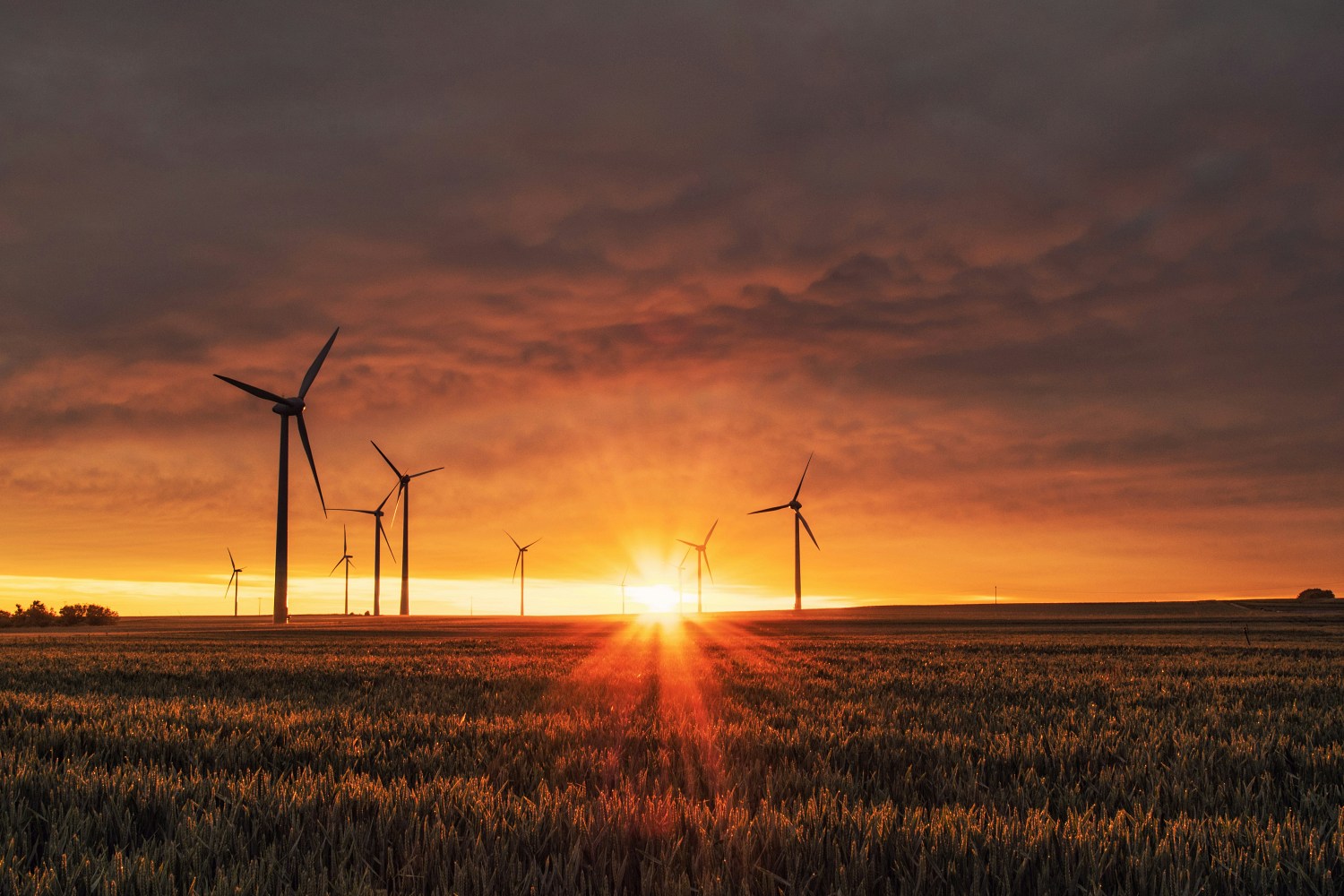

Thank you Mark Mallett for your dedication in using your excellent journalistic skills to write these articles! I wish we would have had someone in Ontario like you to advocate for the residents who were forced to leave their homes. To this day, the harm continues in Ontario under Doug Ford’s government. Please continue to use the information from Ontario to educate Albertans on how the government enables the wind industry and betrays the public trust.
It is interesting to read how other countries are fighting, and hopefully winning this battle. Here in Scotland our beautiful landscapes are being utterly ruined with wind farms, plus the plans for massive 400kv pylons to be built throughout the Highlands. Yes we are fighting it, but sadly our govt are selling out, and the profits going to multinational companies and their shareholders who have no thought whatsoever for those whose lives, livelihood & health will be ruined. Wishing you well – keep fighting.
It is heartbreaking to hear what is happening there, in Newfoundland, Alberta, and elsewhere. People all over the world are waking up to a nightmare when they are told massive turbines are about to destroy their communities for generations to come. It’s a crime against the environment. So I wish your community all the best in your fight; persevere; gather your numbers; educate them; and respectfully persist with your local politicians. I hope that this website provides you with ammo against the lies and greed of the wind industry.
I am so thankful that there are people like you Mark who spread the truth regarding the disasterous effects of wind turbines. These faceless structures truly destroy the beauty of our country and do nothing to replace our reliance on oil and gas.
Perfectly said.
I have a huge question . The indigenous people of Canada say their the protectors of the land , yet they are very silent on this issue . Do you have any information on whether or not that very large group of people are fighting against this mass destruction of land , water ,air in Canada . It would be very interesting to hear from them on this issue .